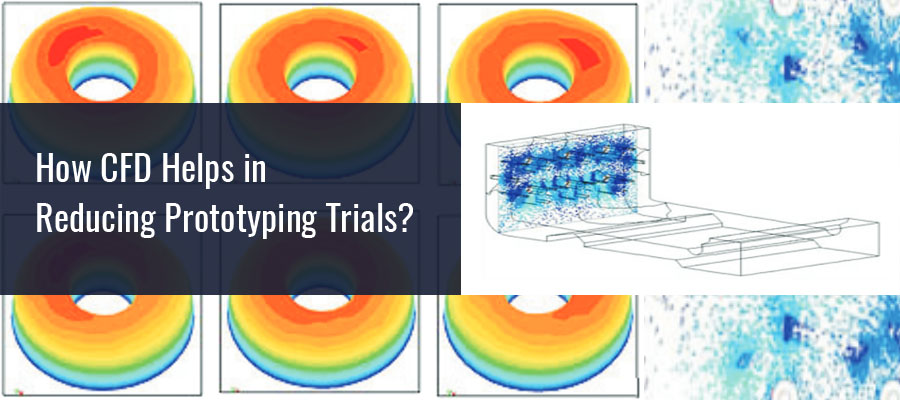How CFD Helps in Reducing Prototyping Trials?
Posted by: Mehul Patel | Posted on: September 28th, 2016

It is increasingly becoming challenging for manufacturers to maintain competitive edge, especially with the fast changing technology, growing regulatory compliances and customer demands for improved performance. Differentiating from other competitors and yet remaining profitable is what manufacturers look to achieve today. However, in this pursuit, there is one often neglected area in design development that can be utilized as a competitive tool to achieve the goals faster – Computational Fluid Dynamics (CFD).
In its early days, CFD was looked upon as an expensive tool, applicable only to research and development of aircrafts. However, the reducing cost of computational power and advancement in solving technologies has opened up the opportunities for this tool to be utilized for wide industrial applications. Today, CFD is applicable to any product design that involves fluid flow or heat transfer phenomenon, and is highly appreciated for conducting studies like aerodynamics, building ventilation, data center cooling, filtration and separation, flow control, heat transfer and fluid mixing.
Traditionally, every design engineer employed thumb rules along with physical prototyping tests to finalize the product design, due to absence of mathematical models for fluid flows around the product. While this approach, products are designed with lot of conservatism and the use of materials and resources are more than required, to ensure that designs perform well in tests. It thus ends with a product design that is costly and also prevents the engineers from applying innovation. On the contrary, the same design can be developed with optimal material usage and better performance and improved aesthetics, using advanced tools like CFD.
Further with thumb rules, the engineers require developing physical prototypes for testing the design. These tests are often validated using trial and error method, resulting into excessive lead times and stretching the time to market the product. And since the engineers work on physical parts repeatedly, the costs keep on incurring. With CFD however, you can evaluate fluid flows using mathematical models accurately, without needing prototyping trials. It thus allows design engineers to explore design alternatives virtually. The tool generates results in form of visuals that can further help the engineer to easily identify the regions in the product design that require attention.
However, there are manufactures that prefer not to invest in CFD capabilities, since it is not their core competency, or sometimes they don’t have the resources to make the best use of this tool. The alternative for such manufacturers is then to outsource CFD tasks to professionals who can support in-house teams with their expertise and experience. However, efficient collaboration is a key with this type of setting. Since, these experts work outside the organization, it is important to brief them about the design requirements, materials used and other specs like weight and size of the design.
Clear communication and collaboration can ensure that the CFD consultant can apply his expertise to improve the design and come up with cost-effective solutions. These simulation experts have wide experience of performing virtual tests for wide applications. Thus, hiring the right consultant can help in reducing product development cost as well as minimize physical prototyping trials. Ultimately, manufacturers can push the innovative product to the market faster with the right price tag.

About Author: Mehul Patel specializes in handling CFD projects for Automobile, Aerospace, Oil and Gas and building HVAC sectors. He works as a CFD consultant with Hi-Tech CFD for the past 5 years and has successfully executed numerous CFD projects of high complexities. He is an expert in turbo-machinery, gas dynamics, Combustion, Fluid Dynamics, multiphase flow analysis, computational fluid dynamics etc.
